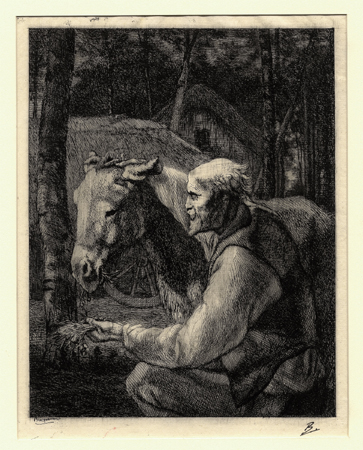Ducking Impressionism
Prints And Drawings Of Félix Bracquemond (1833-1914)
Including Some Early Rarities
Prints And Drawings Of Félix Bracquemond (1833-1914)
Including Some Early Rarities
- Fables de La Fontaine
- Croquis de Jacques Guichard
- Perdrix
- Le Retour au Logis
- Rue Vivienne la Nuit
- L'Âne
- Les Trétaux
- Virginie de Leyva
- L' Inconnu
- Vanneaux et Sarcelles
- Philomela
- La Mort de Matamore
- Monument Funèbre
- Le Bateau du Teinturier
- Les Saules des Mottiaux
- Le Service du Vin
- Iles du Rhin
- L'Eclipse
- Dernière Réflexion
- Il Pleut à Verse!
- Boissy d’Anglas
- Studies of an Actor
- Le Vieux Coq
- Canards Supris
- Canards Supris
- Brumes du Matin
- Brumes du Matin
- Brumes du Matin
- Labor ou Le Paysan à la Houe
- Ébats de Canards
- Jacques Bosch, Guitarist
- La Rixe (The Brawl)
- Les Graveurs du XIXe Siécle
- Le Lion Amoureux
- L'Homme Qui Court
- L'Homme Qui Court
- La Teste et la Qüeue
- Le Nouveau Né
- Entrée des Croisés
- Entrée des Croisés
- Cinq Eaux-Fortes
- Les Faisans
| 6. Félix Bracquemond (1833-1914) L'Âne, from Chansons de Charles Desforges de Vassens (The Donkey, from the unpublished Lyrics of Charles Desforges de Vassens) |
(click on image to print)

L'Âne, from Chansons de Charles Desforges de Vassens (The Donkey, from the unpublished Lyrics of Charles Desforges de Vassens)
Etching, 1856, 238 x 184 mm., Béraldi 354, B. N. Inv. 65, Bouillon Af 17 i/ii.
A very fine impression on thin, probably old, laid paper with small margins on three sides, trimmed on the platemark at the right, signed in ink with an initial; some old hinging tape at the right edge. Béraldi remarks on the rarity of the print and Bouillon suggests a total printing of ten impressions in his two states. In fact, this impression may be earlier than Bouillon's first state, as a clearly defined plate mark here measures considerably more than the dimensions he gives, and the wide plate margins contain some inked false biting of which he was unaware. Though the plate is conventionally titled as above (or as Paysan et son Âne), another impression noted by Bouillon had a penciled inscription: St. Joseph. It is a very lovely print in a style that we would associate with Alphonse Legros but for the fact that it anticipates Legros' work by at least five years.
![]()